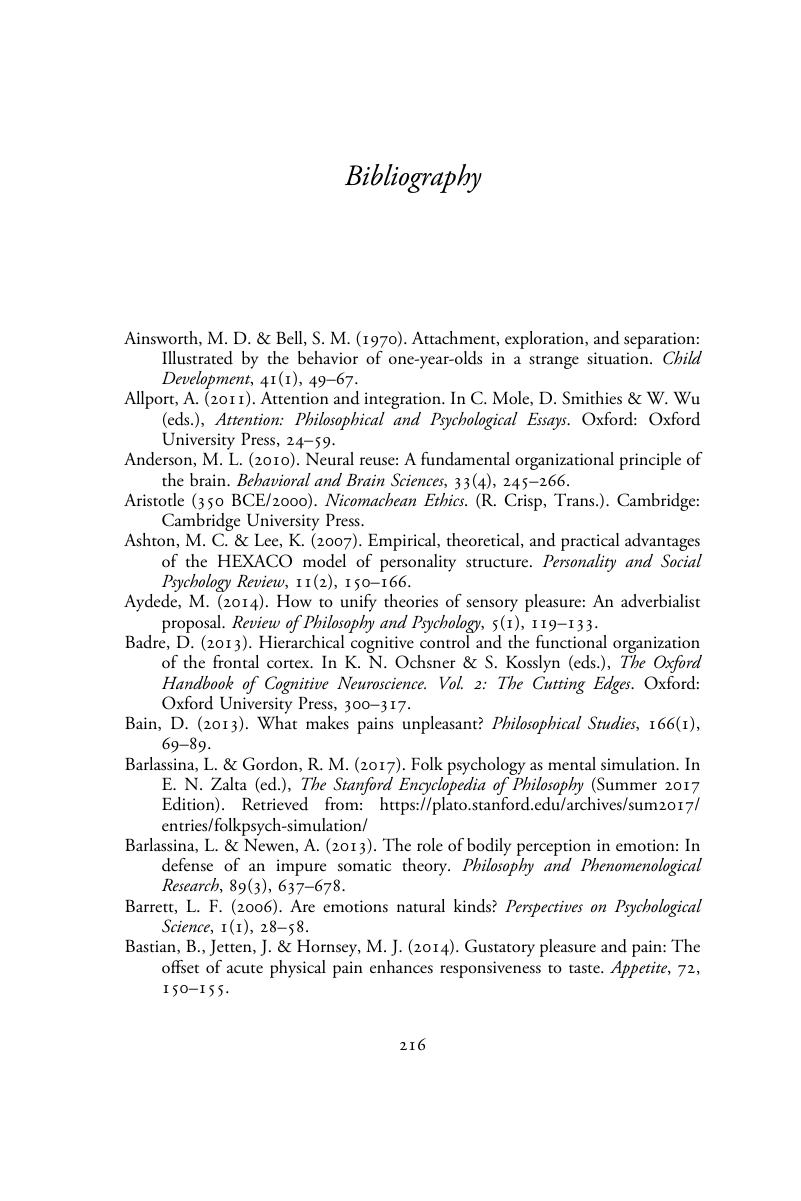Book contents
- The Emotional Mind
- The Emotional Mind
- Copyright page
- Dedication
- Contents
- Figures
- Tables
- Acknowledgements
- Introduction
- Chapter 1 Valent Representation
- Chapter 2 Affect
- Chapter 3 Emotions
- Chapter 4 Bodily Feelings
- Chapter 5 Expression
- Chapter 6 Conscious Thought
- Chapter 7 Personality and Character
- Chapter 8 Control
- Appendix Emotion Dimensions
- Glossary
- Bibliography
- Index
- References
Bibliography
Published online by Cambridge University Press: 04 January 2019
- The Emotional Mind
- The Emotional Mind
- Copyright page
- Dedication
- Contents
- Figures
- Tables
- Acknowledgements
- Introduction
- Chapter 1 Valent Representation
- Chapter 2 Affect
- Chapter 3 Emotions
- Chapter 4 Bodily Feelings
- Chapter 5 Expression
- Chapter 6 Conscious Thought
- Chapter 7 Personality and Character
- Chapter 8 Control
- Appendix Emotion Dimensions
- Glossary
- Bibliography
- Index
- References
Summary

- Type
- Chapter
- Information
- The Emotional MindA Control Theory of Affective States, pp. 216 - 230Publisher: Cambridge University PressPrint publication year: 2019

